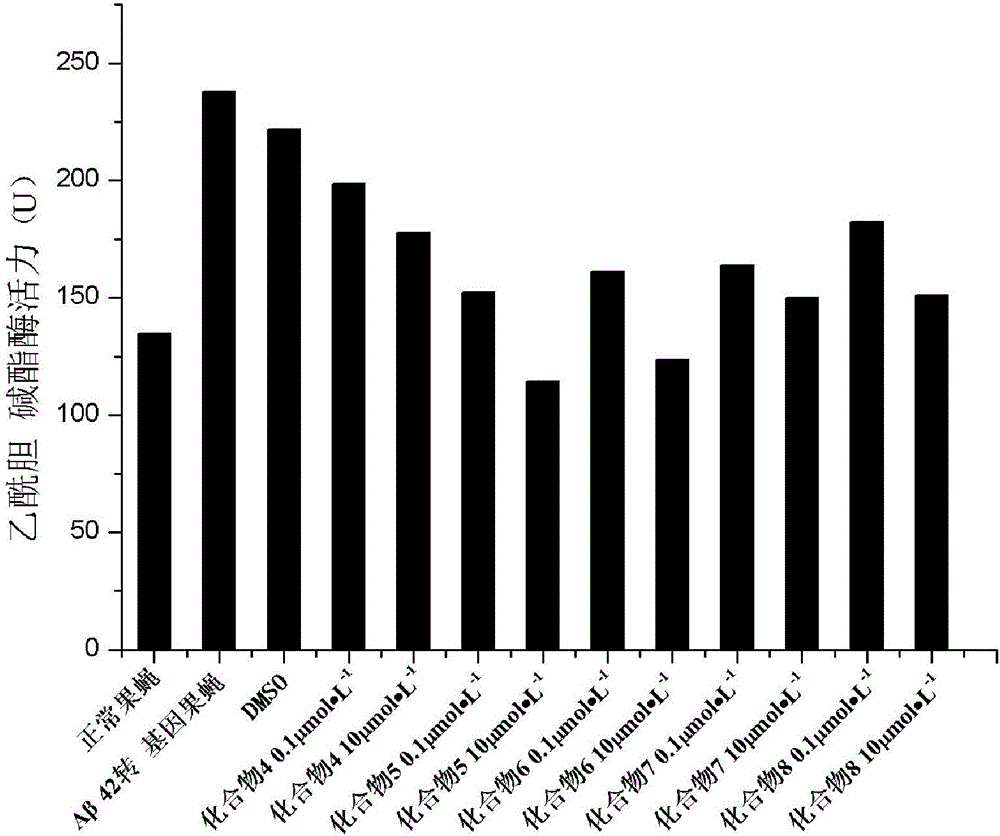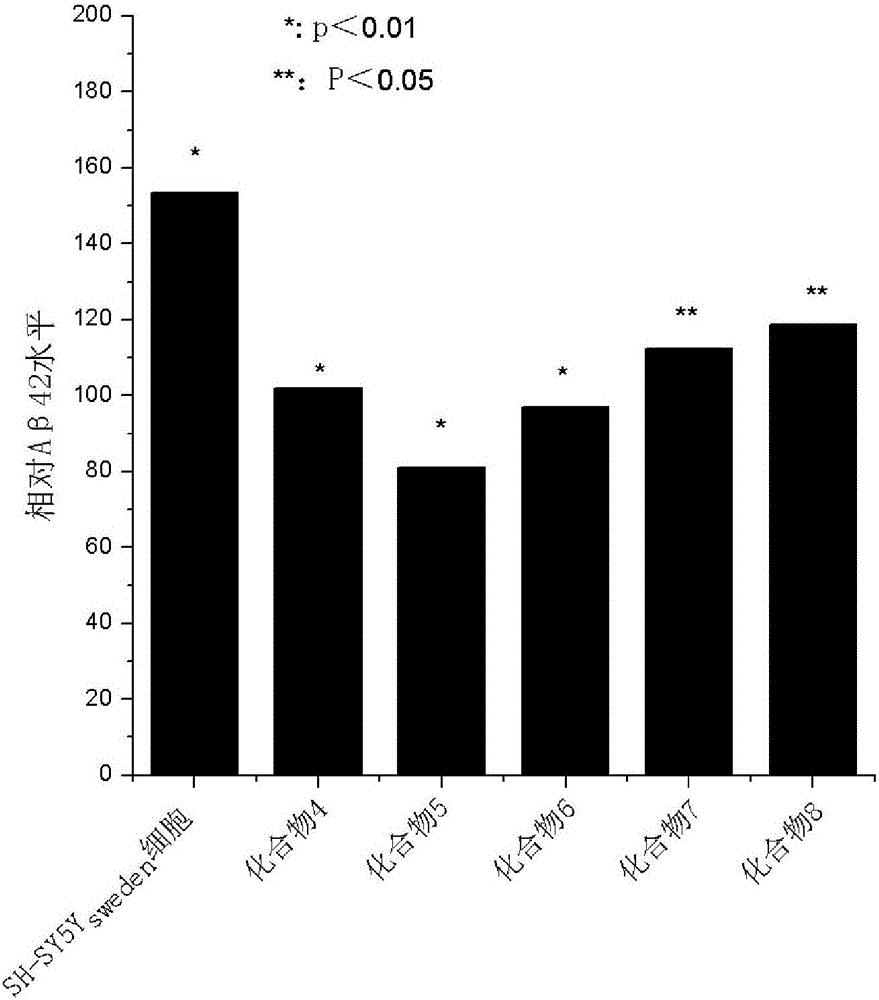Application of 8-substituted oxoisoaporphine derivatives
A technology of isoapofil and its derivatives, which is applied in the new application field of 8-substituted oxidized isoapofil derivatives, can solve the problems of anti-Aβ aggregation that have not yet been found, and achieve good application prospects and good anti-Aβ aggregation activity , low toxicity effect
- Summary
- Abstract
- Description
- Claims
- Application Information
AI Technical Summary
Problems solved by technology
Method used
Image
Examples
Embodiment 1
[0026] Example 1: Synthesis of 4-chloro-2-phenylisoindoline-1,3-dione (compound 1)
[0027] Add 57g (0.1mol) of 3-chlorophthalic anhydride and 45g (0.1mol) of phenethylamine into a 1L three-hole round bottom flask, then add 500ml of toluene, reflux for 6 hours, pour it out while it is hot, and cool it down. Crystals were precipitated and filtered with suction to obtain compound 1 (white flaky crystals) with a yield of about 98%.
[0028] Compound 1 is analyzed, and its spectral characteristics are as follows:
[0029] 1 H NMR (CDCl 3 ,500MHz): δ3.00~3.04(m,2H),3.94~3.97(m,2H),7.23~7.34(m,5H),7.65(d,J=1.7,1H),7.66(s,1H) ,7.78(dd,J 1 =5.0 and J 2 =3.2,1H); ESI-MS (m / z): 287[M+H] + .
[0030] Therefore, it can be determined that the above-mentioned compound 1 is 4-chloro-2-phenylisoindoline-1,3-dione, and its structural formula is as follows:
[0031]
Embodiment 2
[0032] Embodiment 2: the synthesis of 8-Cl-1-azabenzanthrone (compound 2)
[0033] Add 75g (0.56mol) of anhydrous aluminum trichloride and 15g of sodium chloride into a 1L three-hole round bottom flask, mix and heat to 140°C for melting, then slowly add 53g (0.2mol) of compound 1 in batches After the addition, the temperature was raised to 220°C, and the reaction was stirred for 3 hours, poured into a mortar while heating, cooled, and crushed to obtain a reddish-brown solid, which was placed in a dry vessel.
[0034] Take 600ml of concentrated sulfuric acid and add it to a 2L three-hole round bottom flask. When the temperature rises to 80°C, start adding the reddish-brown solid obtained above in batches. About 600g of ice water was used to adjust the pH value to about 2-3 with NaOH, and a large amount of solid was precipitated, filtered with suction and washed with water to obtain a crude product. The crude product was purified by silica gel column chromatography (petroleum e...
Embodiment 3
[0038] Example 3: Synthesis of 8-amino-7H-dibenzoquinolin-7-one (compound 3)
[0039] Take 1.5g of compound 2 into the liner of the autoclave, add 100ml of ammonia water, react at 180°C for 12h, and then stop the reaction. After cooling, adjust the pH to 7-8 with 3mol / L HCl, filter with suction, and dry. The crude product was purified by silica gel column chromatography (petroleum ether / chloroform=7:1) to obtain compound 3 (red solid) with a yield of 40%.
[0040] Compound 3 was analyzed, and its spectral characteristics were as follows:
[0041] 1 H NMR (500MHz, DMSO): δ8.73(d, J=5.5Hz, 1H), 8.45(d, J=7.2Hz, 1H), 8.29(d, J=8.2Hz, 1H), 8.06(d, J=8.4Hz, 1H), 8.02–7.97(m, 1H), 7.94(d, J=5.6Hz, 1H), 7.55–7.48(m, 1H), 7.00(d, J=7.3Hz, 1H), 2.51(t, J=2.8Hz, 2H); ESI-MS(m / z): 247[M+H] + .
[0042] Therefore, it can be determined that the above-mentioned compound 3 is 8-amino-7H-dibenzoquinolin-7-one, and its structural formula is as follows:
[0043]
PUM
 Login to View More
Login to View More Abstract
Description
Claims
Application Information
 Login to View More
Login to View More - R&D
- Intellectual Property
- Life Sciences
- Materials
- Tech Scout
- Unparalleled Data Quality
- Higher Quality Content
- 60% Fewer Hallucinations
Browse by: Latest US Patents, China's latest patents, Technical Efficacy Thesaurus, Application Domain, Technology Topic, Popular Technical Reports.
© 2025 PatSnap. All rights reserved.Legal|Privacy policy|Modern Slavery Act Transparency Statement|Sitemap|About US| Contact US: help@patsnap.com



